
From San Francisco to Anderlecht, tracing the path of an uncle, a B-17 navigator
How to research a relative’s experience during World War 2, when an ocean and 78 years separate a family from the time and place where it all happened? This is the story of how – with the help of CegeSoma - two brothers, Steve and Rick Katz, learned how their uncle, Monroe Gordon, was saved by Belgian resistance fighters in 1944.
February 4, 1944. Monroe A. Gordon, 27, is a flight navigator for the Dollie Madison, a US Army Air Force B-17 bomber. He joins nine other crew members on a mission over Frankfurt.

(Katz family private collection)
November 2020, San Francisco. Steve Katz is shocked to discover swastika flyers plastered on the walls of his town by a neo-Nazi punk. It reminds him of a piece of hazy family history: that of his uncle, who joined the US Army Air Force to fight the Nazi domination of Europe during World War II. Steve realizes that he and his family should know what really happened to their uncle, to put names, dates, and faces on the story. Who were these people who saved him and protected him from the German army? What is the story of this young man who fought Nazism in Europe? The investigation begins.
February 4, 1944. The bomber turns back toward its base in southeast England after completing its mission over Frankfurt. Over western Belgium, the plane develops engine trouble, forcing the pilot to bring the B-17 down from a cruising altitude of 9,000 meters to 900 meters, and then ordering the crew to jump and deploy their parachutes.
December 2020. Steve and Rick Katz only know that their late uncle was on a bomber that crashed "somewhere in Europe on some day" during World War II, and that he was rescued by unknown people. All they have to go on is a portrait of their uncle in uniform, and a service number. The hunt begins, identifying their uncle’s insignia, establishing contacts, searching for sources and gradually understanding the context...
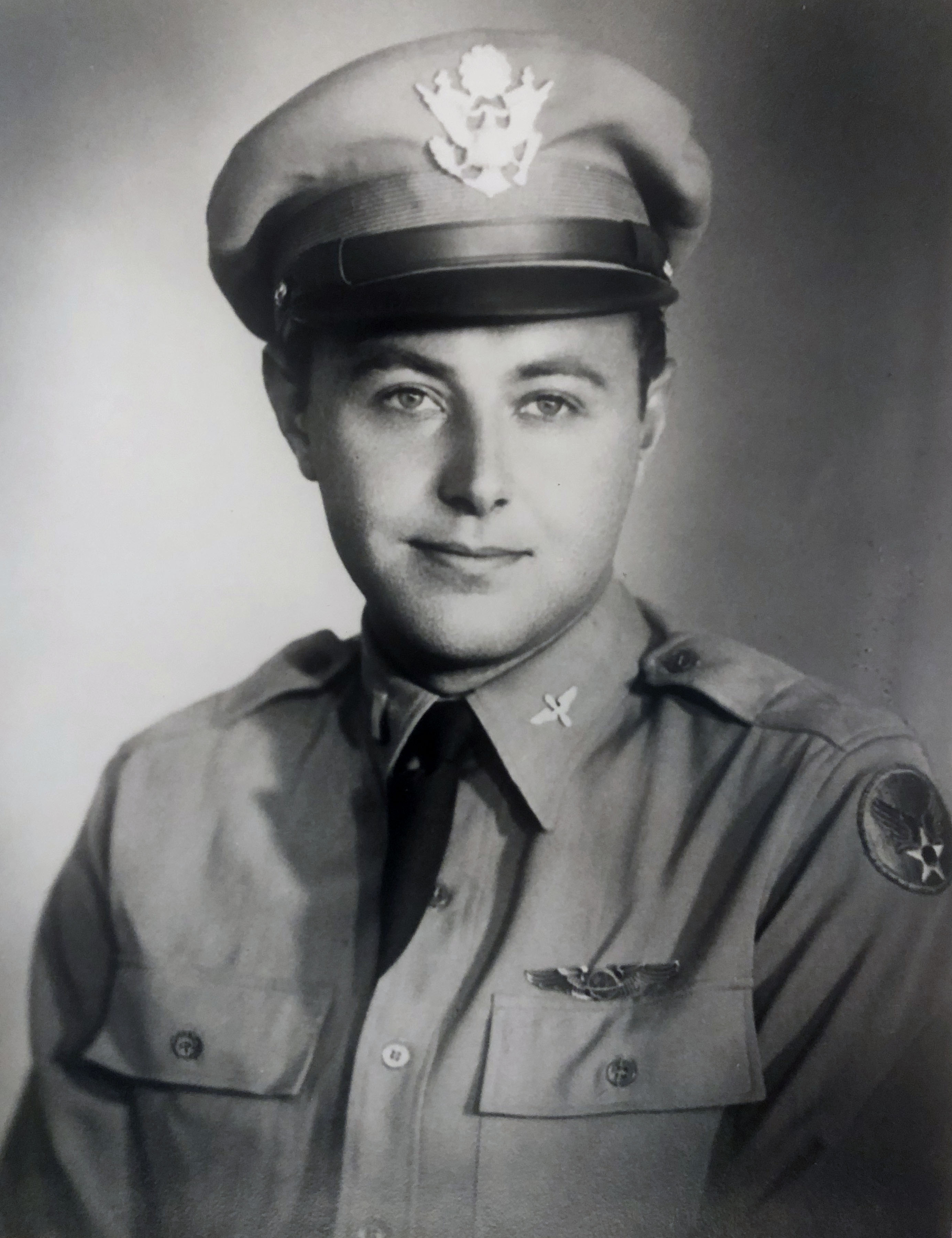
found in the Katz family archives
February 4, 1944. Monroe Gordon must parachute out of his plane. He lands a few kilometers from Mons, in the province of Hainaut, near the village of Montignies-Iez-Lens.

landed in emergency on February 4, 1944
January 2020. From a U.S. Army Air Force "Escape and Evasion" military intelligence report obtained from the US National Archive, Steve discovers a list of people who sheltered and protected his uncle during the eight months following his forced landing. But it’s just a list of names, with no further detail.
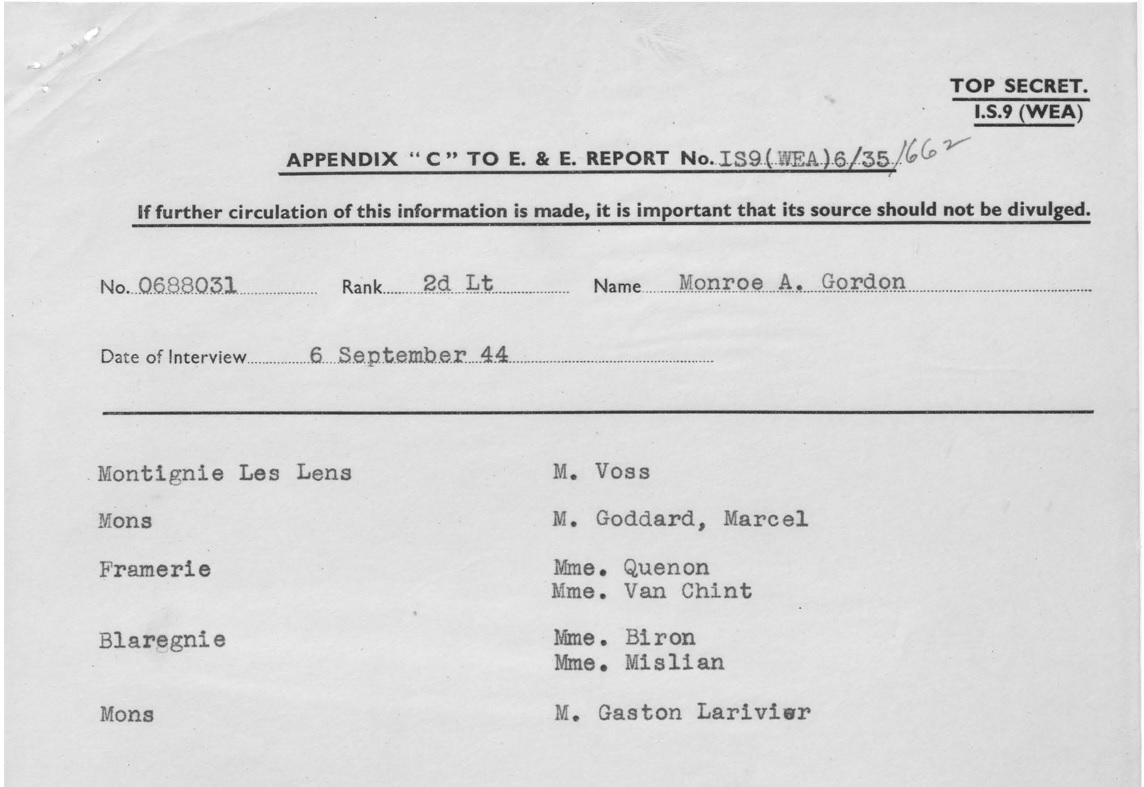
(U.S. National Archives Catalog https://catalog.archives.gov/id/5556283)
April 2021. Through the Museum of the Resistance, Rick and Steve Katz learn about CegeSoma, and soon order a copy of the Resistance fighters' personnel files that mention Allied Airman Gordon (through the Center's science team and reproduction department). The people behind the names begin to emerge: it seems clear that a family by the name of Vos rescued and sheltered the airman on the day of the crash. It also appears that their uncle only spent a very short time with the Vos family.

indicates that the Vos family saved Monroe Gordon and hid him for only a short period
(CegeSoma collections).
February 5, 1944. After his parachute landing on Belgian soil, Monroe Gordon, suffering from rib and leg injuries, is rescued by the family of Maurice and Louisa Vos. Dressed in civilian clothes, he takes refuge on the Vos family farm, and is then hidden in their barn under bales of hay when German soldiers arrive,searching for him.

(Private collection Isabelle Pain)
September 2021. Rick Katz finds a folder that their uncle had kept including the photograph of Monroe and Louisa Vos, dated February 5, 1944 - the day after the crash - and a packet of letters. One of them, signed Nan Keen, enables the Katz brothers to take the next step in their research. They discover that the Vos family had arranged for 15 members of the family of this young Jewish girl - then known as Nan Miliband - to be hidden throughout the village of Montignies-lez-Lens. Nan (along with her mother Renée) was also in hiding on the Vos family farm; she later provided first-hand confirmation of what happened to their uncle:"In the barn, we climbed the ladder and [I] covered him with hay before hiding near him. After a while, the barn door opened. Armed Germans entered and began to stir up the haystacks scattered on the first floor of the barn. We hid, almost not daring to breathe. Fortunately, they decided to leave after a few minutes, saying that there was no one in the barn. [Source:The Telegraph ]
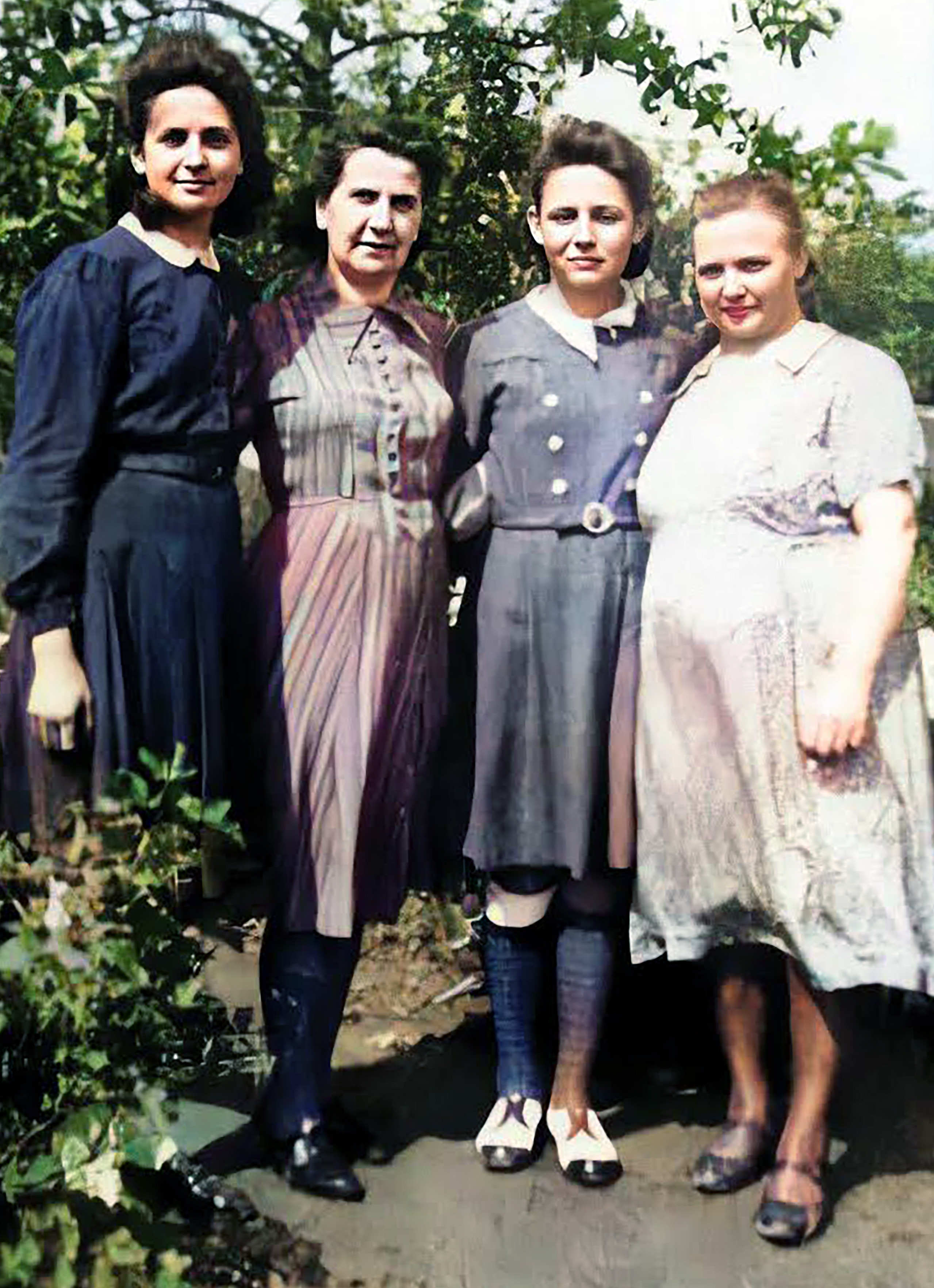
Nan Miliband, Renée Miliband, Renée Vos,
Louisa Vos 1943 (Private collection Isabelle Pain)
With this information about the Miliband and Vos families, Steve and Rick connect with Vincent Vagman, author of “La Famille Miliband: Un demi-siècle dans les tumultes de l’Europe.” Vagman introduces Steve to Isabelle Pain, the daughter of Renee Vos and granddaughter of Maurice and Louisa Vos. The circle has been closed. The connection has been made.
Steve and Rick also learn that their uncle Monroe's stay continued further south near the French border, in the village of Blaregnies.
February 1944. A few days after being rescued by the Vos family, Monroe Gordon, with a false passport, finds refuge at the home of two Belgian resistance fighters in the village of Blaregnies.
September 28, 2021. Steve Katz asks CegeSoma for more information about the two women who may have helped his uncle. The only clues he has are some photos kept by his uncle and two names - Mrs. Biron and Mrs. Mislaine - listed in the Escape and Evasion report.
9/28/21, 2:26 p.m., Steve Katz: "So far, I have been unable to find any information about them, despite the fact that our uncle spent months hiding in their home. Is there any way to determine if Cegesoma might have records on them?"
9/28/21, 3:02 PM, Fabrice Maerten (CegeSoma): "I found Ms. Biron's and Ms. Mislian's personnel files in the State Security personnel file series for intelligence and action officers (AA1333). In reality, Mrs. Biron's name is Julie Alterman, widow Biron, born on 20.03.1881; and Mrs. Mislian is Adilie Alterman, widow Mislian, born on 30.05.1874. So they are both sisters!”
February 1944. Besides Monroe Gordon, the Alterman sisters shelter three of his fellow crew members who escaped from German soldiers: Robert Walther, Lester Smith and Don Dahlin. Monroe Gordon will remain at the Alterman sisters for 8 months, until Liberation in September 1944.
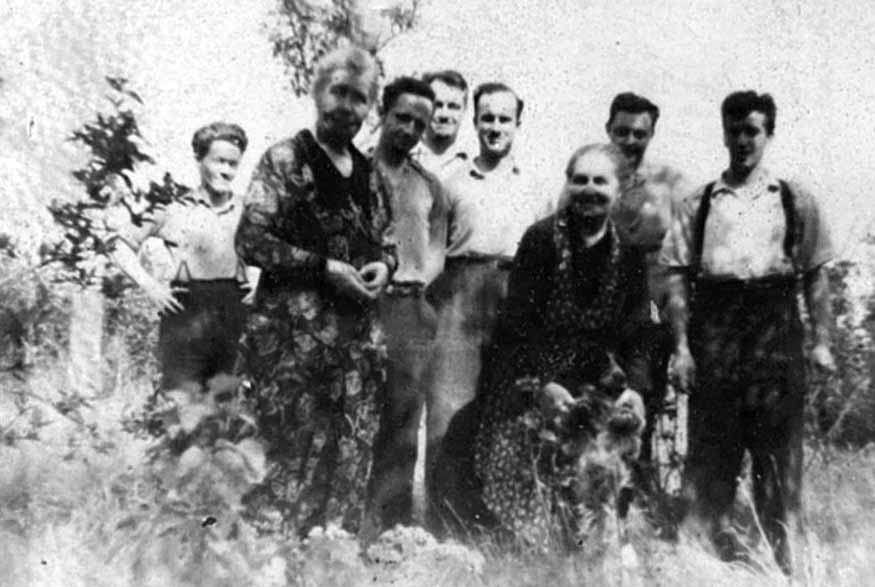
Gerald Miller, Monroe Gordon and Paul Herring, September 1944 (Katz family private collection)
September 1944. After months of no news, Monroe's parents and sister (Steve and Rick’s mother) receive a telegram from the U.S. Army Air Force. The airman is alive, in London!
October 2021. Armed with new information about Julie and Adilie Alterman, Steve and Rick Katz make contact (via the MaquiStory museum in Silly, Belgium) with Sylvie Dujardin. With her students from the local school in Blaregnies, this teacher has created a remarkable local history project about the Alterman sisters and the role of the Belgian resistance in Blaregnies. Through Sylvie, Steve and Rick are put in touch with members of the Quévy history circle - Le Cercle des 10 Clochers - who have done extensive research on this history.
December 2021. After reconstructing their uncle's itinerary in Belgium and mapping the constellation of people who rescued him, Steve and Rick Katz decide to take their research one more step. They ask CegeSoma to reproduce the personnel files of other resistance fighters connected to the Vos family and the Alterman sisters, and seek to learn more about the broader context of the resistance in the Borinage.
May 2022. Anderlecht. Steve and Rick Katz, accompanied by Rick's son Gary, visit the CegeSoma offices. It is an opportunity to physically hold in their hands the dossiers that allowed them to shed light on their uncle's story, and to continue to explore questions that are still open: what was the daily life like for a 27 year old man hidden for 8 months with two sisters in their 60s? Was the bravery of the Vos family, who hid Monroe but also more than fifteen Jews, particular and exceptional or was it part of a larger trend? Why don't some of the women who played a key role have records of recognition in their names? What motivated an 18-year-old boy from a rural background to join a resistance movement and risk his life?
We tried to help them find some answers before they left to follow in the footsteps of their uncle in Montignies-lez-Lens and Blaregnies. We thank them warmly for sharing their story and the various documents illustrating this article.
You can also read Steve Katz' story on Twitter: https://twitter.com/steve_katz/status/1458821042617536514
Anne Chardonnens, responsible for the digitalization sector
CegeSoma reading room
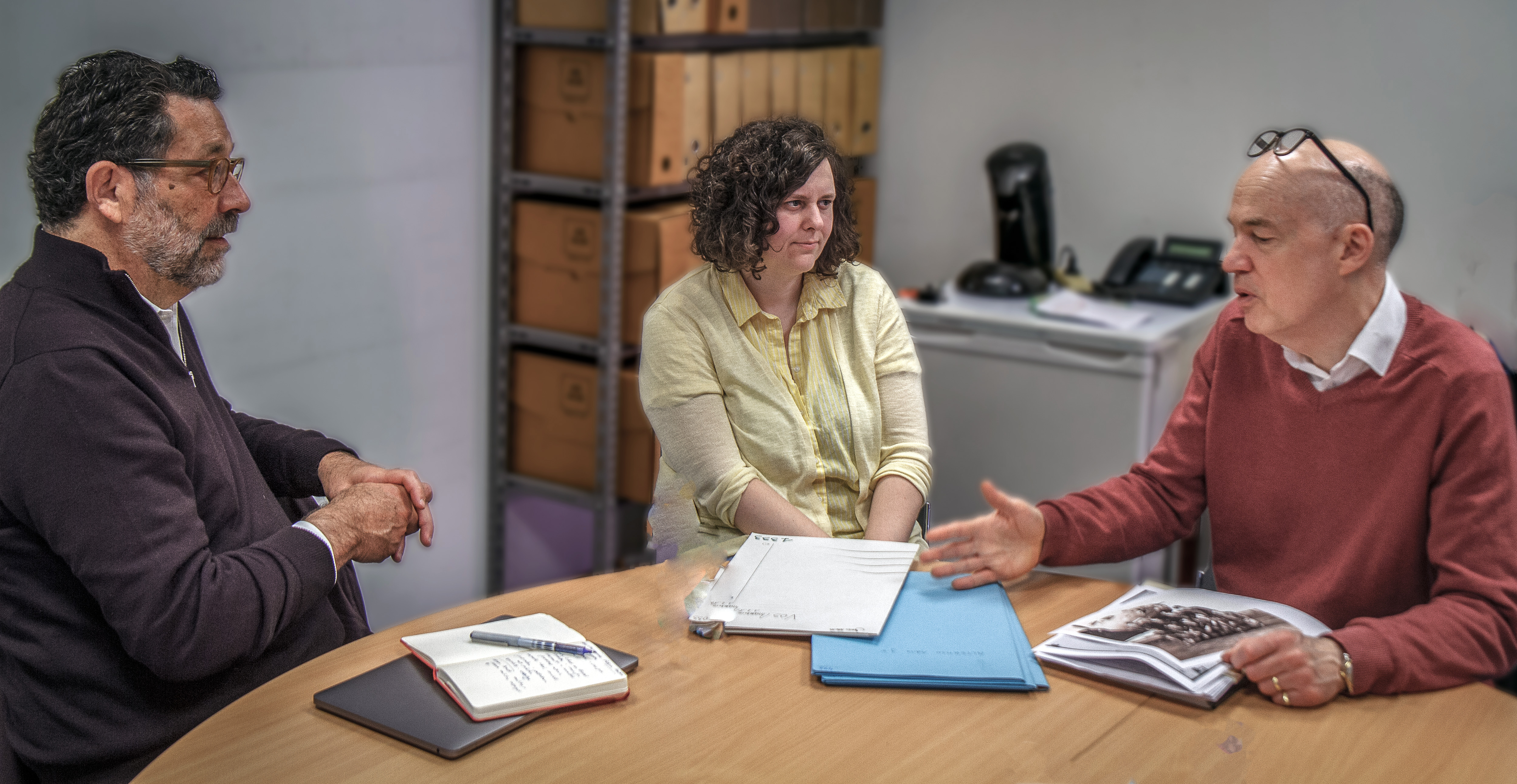
Anne Chardonnens and Fabrice Maerten (Richard Katz © 2022)
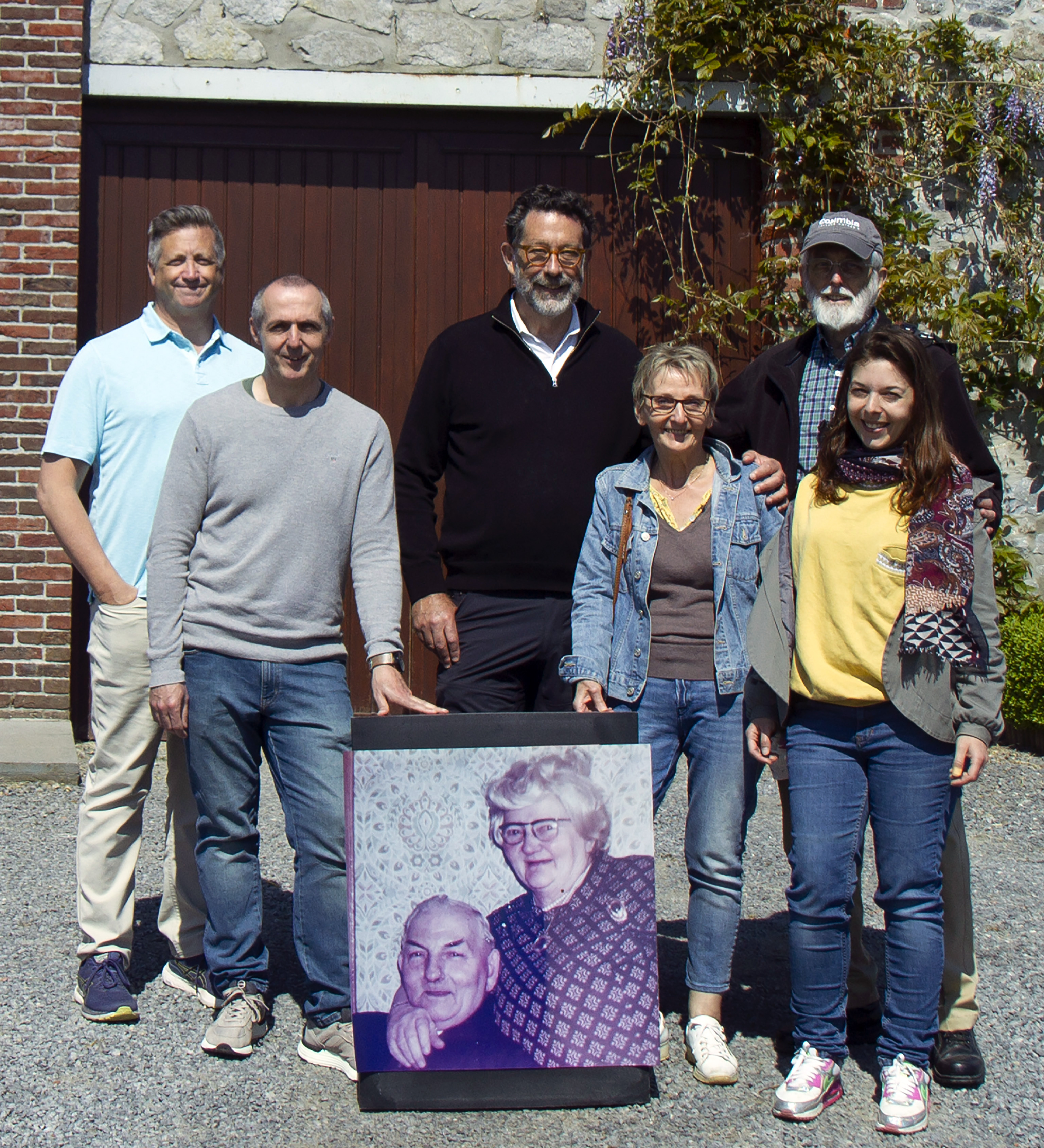
and Louisa Vos) and the Katz family in front of
the family farm, from left to right: Gary Katz,
Olivier Dassonville, Steve Katz,
Françoise Dassonville,
Rick Katz, Blandine Druart (Richard Katz © 2022)
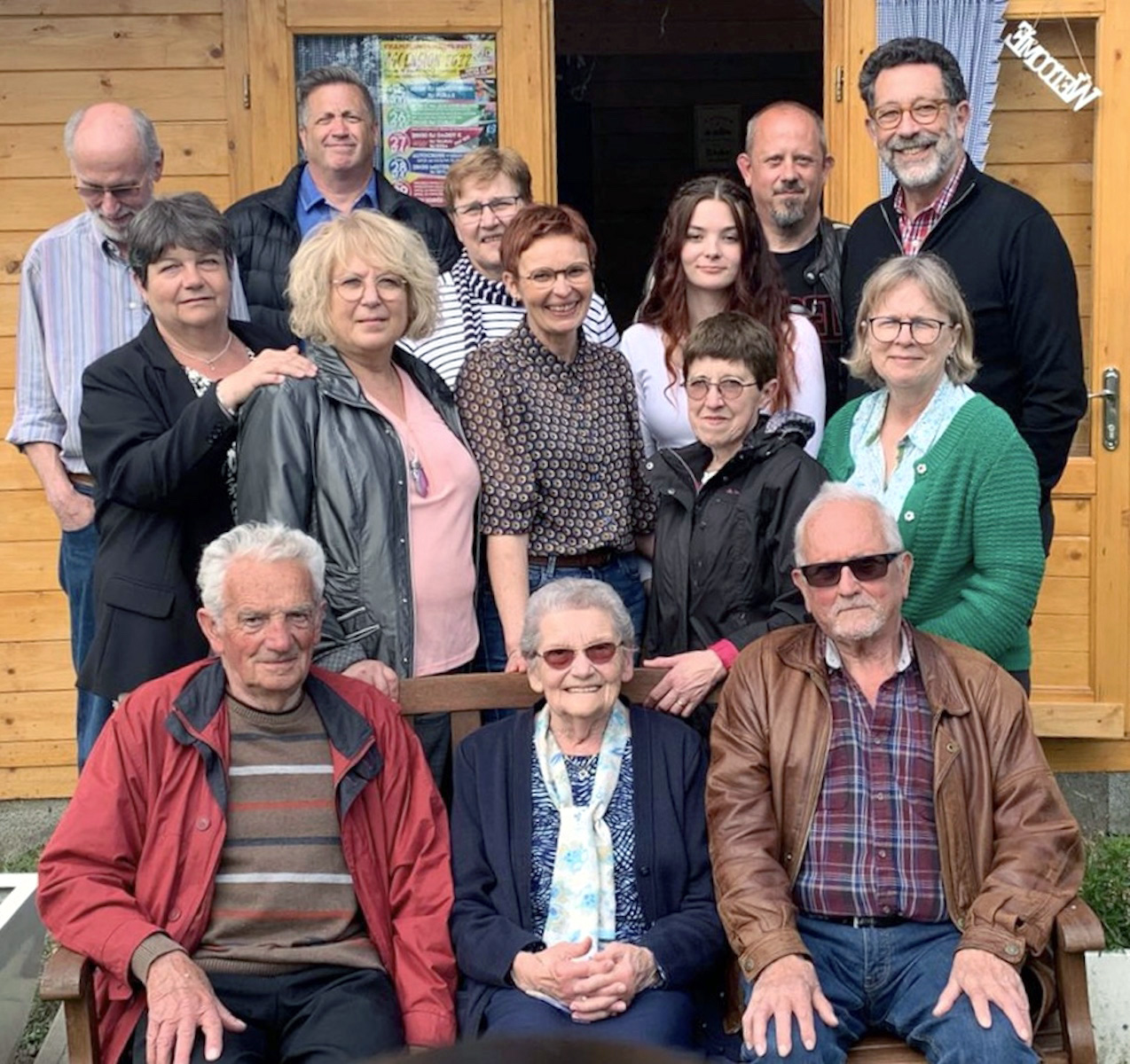
Top row: Bernard De Smet, Gary Katz, Marie-Anne Mayez,
Christophe Blondiau, Steve Katz.
Middle row: Jeanne Marchal's daughter, Edmée Pivont,
Sylvie Dujardin, Paloma Diaz Portillo, Annette Cerisier,
Julie Shaffer. Bottom row: Ghislain Vanderlinden,
Jeanne Marchal, Jacques Blondiau. (Richard Katz © 2022)
- Are you doing research on a person who took part in the resistance in Belgium and would like to know if CegeSoma has any information about them? Contact Fabrice Maerten.
- Do you want to order reproductions of archives? Use our reproduction service.
- Would you like to know more about the context of the resistance in Belgium? Discover the resistance source guide "Was Grandpa a hero?" and explore 5 essential questions related to the resistance on our Belgium WWII platform.